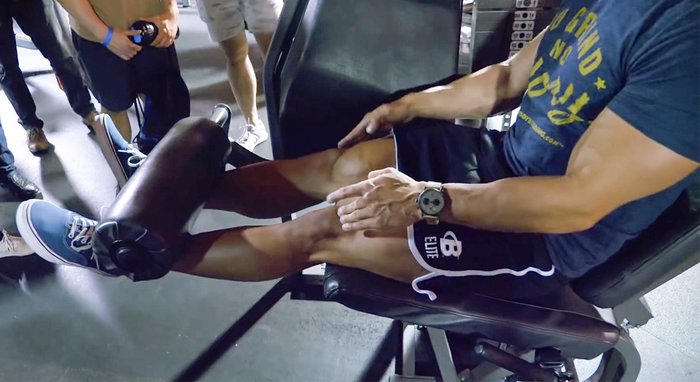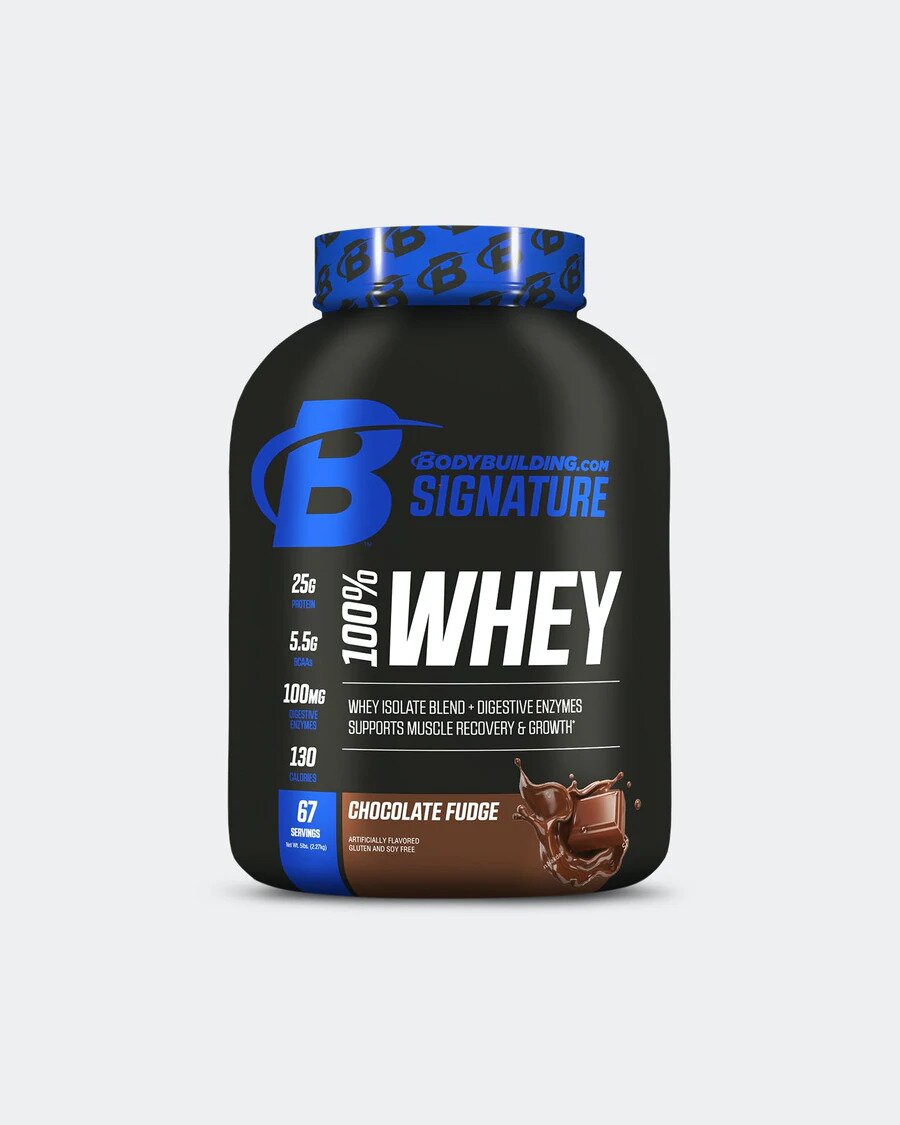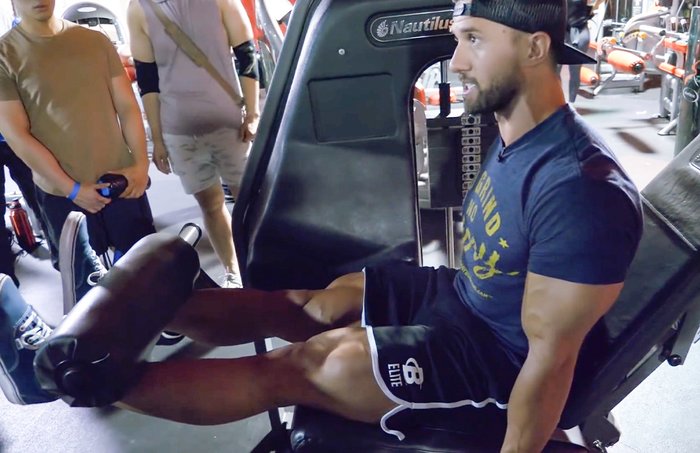"Team no leg day" is not the team to be on anymore. (Well, it never really was, but there were a lot of participants, regardless.) Guy or gal, big quad muscles are as enviable as chiseled arms or sculpted glutes. Without them, your physique is lackluster. But achieving them takes time, volume, and proper exercise selection for your workouts.
The squat is the gold standard for building muscle in the legs. But the leg extension machine has been unjustly maligned for many years. Team Bodybuilding.com athlete Julian Smith is here to set us straight once and for all on how to use this machine successfully and without injury.
"I have never suffered an injury in my 16 years of training by training the right way," Smith says. "Every time I've been hurt, it's doing way too much weight with bad form."
The simple yet impactful hacks in the accompanying video will help you balloon those quadriceps muscles for a more athletic shape, while avoiding 80-year-old-knee syndrome. After all, he isn't nicknamed "The Quad Guy" for nothing.
Here, then, are Smith's tips for using the leg extension machine effectively in your workouts.
Find the Stance or Foot Placement That's Right For You
The first thing Smith emphasizes is that the size of your wheels is going to dictate how you set yourself up on this machine. Of course, your anatomy will factor into what position gives you optimal quad muscle engagement, just like with a squat or a deadlift. For example, if your legs are longer, you might find a wider stance to be more comfortable.

Avoid Leg Extension Machines with One Control Arm
Says Smith: "Have you ever felt like one side is getting a little bit more pumped when doing leg extensions? Maybe one's stretching more than the other? If you look down, you will actually see, since the arm is on one side, that over the course of time it will bend because the inside arm is the leverage point."
If a one-armed leg extension is your only option, and you notice that the pad is bent forward, he suggests padding your outside leg with a knee wrap or sweat towel to even out your positioning.

Use the Handles on the Sides
At the risk of stating the obvious, those handles are there for a reason.
"Once you select a heavy enough weight that when you start to push, it starts lifting you up a little bit, that's when you pull yourself back down into the seat using the handles, and contract all the way up," Smith says.
And no, this isn't cheating. Your legs are doing the work to get the full lockout that you wouldn't get otherwise. This leads Smith to his next tip…
You Should Fully Contract Your Quads and Lock Out
Most gym regulars have heard that locking out your knees on the leg extension is what causes pain. In fact, this is the most important part of the movement, according to Smith.
"It's a full contraction, which you can't achieve on anything else in a quad-focused exercise," he says.

The tension from start to finish is constant, and the full contraction is where you feel the burn most. To not lock out would be leaving the goldmine of this exercise untapped.
Don't "Bow" Your Legs During the Repetitions
Speaking of pain, there is a way your knees will come to hate you for doing this exercise, and that is if you're bowing your legs by letting your knees drift to the sides. They end up pointing in one direction while your legs are moving the weight straight up. Instead, says Smith, keep the upper and lower halves of your wheels aligned throughout each repetition.
If You Point Your Toes in Either Direction, Only Do It Slightly
When you point your toes in or out, you aren't going to really feel it in a different part of the quadriceps unless you drastically change the positioning of your knees along with them—which leads us right back to the issue of bowing your knees in or out. According to Smith, however, small adjustments can make a difference without compromising the health of your joints.
So that's it—a quick rundown on the importance of adding the leg extension to the squat in your repertoire of go-to strength training exercises for this important muscle group!

